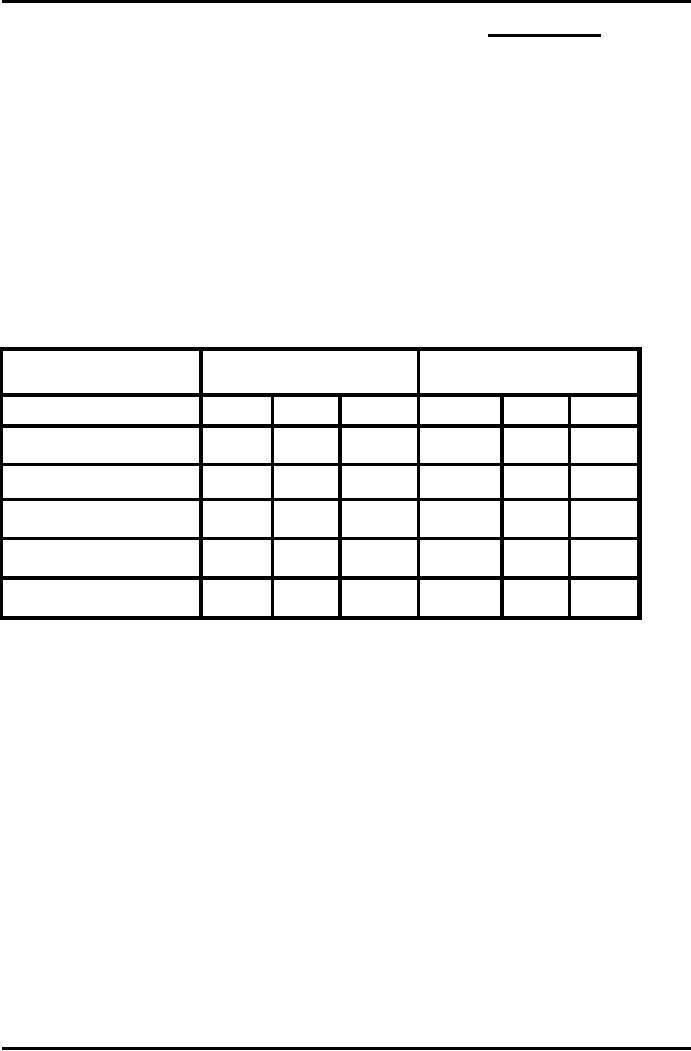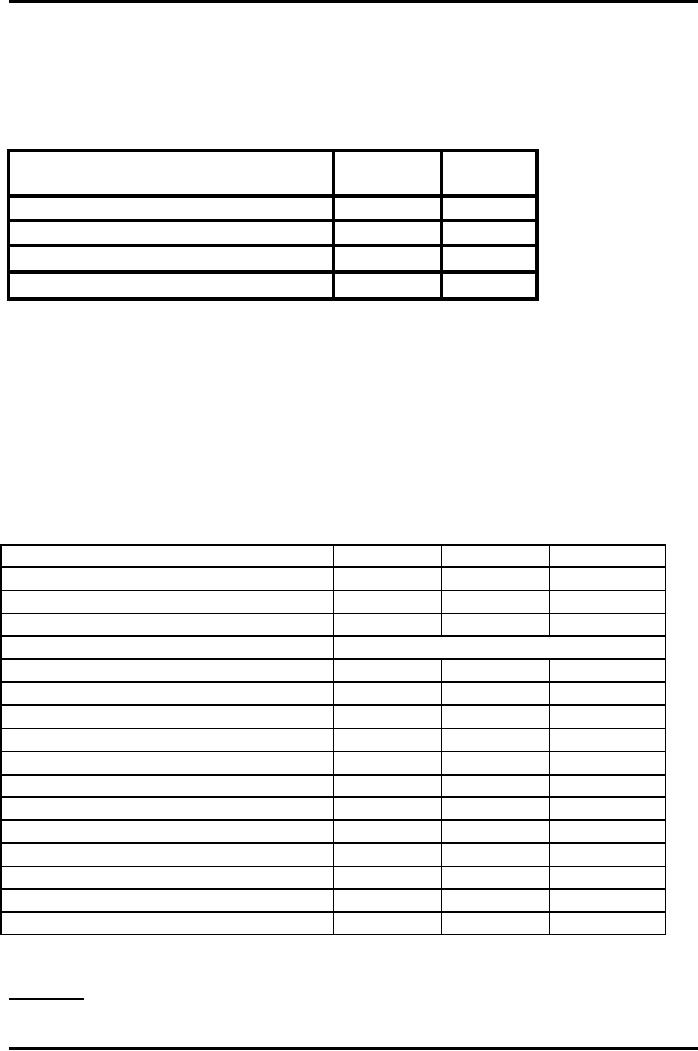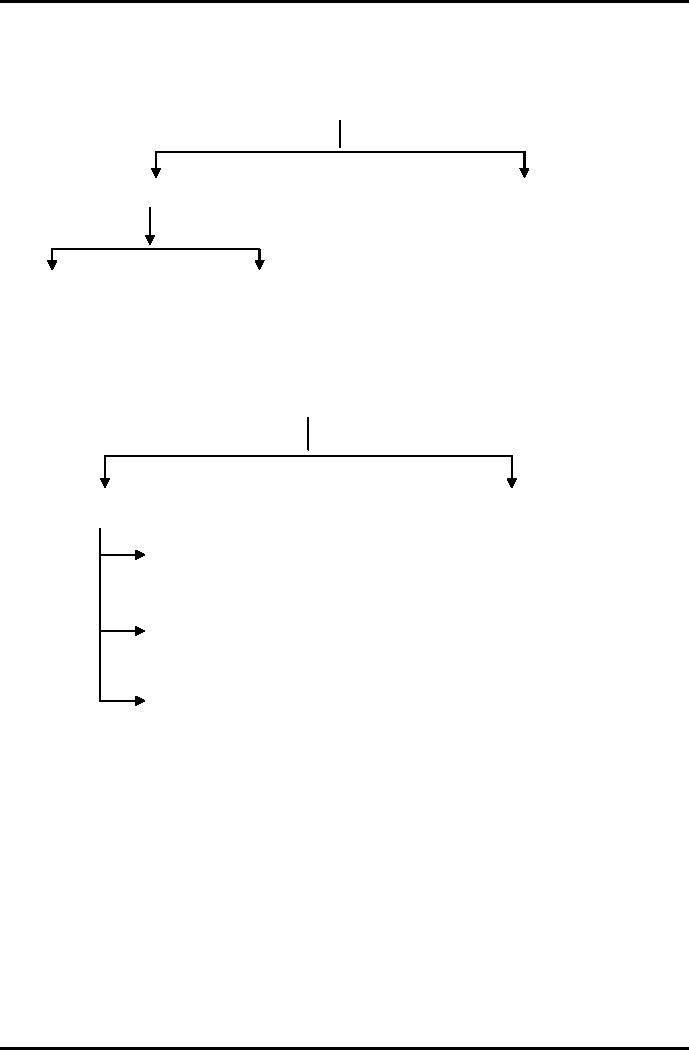 |
DEPARTMENTAL ACCOUNTS 2 |
| << DEPARTMENTAL ACCOUNTS 1 |
| BRANCH ACCOUNTING SYSTEMS >> |

Advance
Financial Accounting
(FIN-611)
VU
LESSON
# 10
DEPARTMENTAL
ACCOUNTS
Some
times departments prefer to buy
goods from their internal
departments for this
prices
are charged equal to the
normal selling prices or a department may
transfer at it
original
cost price. Since each
department is considered as a separate
profit centre, it is
necessary
to have separate records for
inter-departmental transfer of goods or
even
services.
The
department which transfers the
goods considers its
transfers as equal to sales
and
the
department which receives the
goods considers it as equal to
its purchases and put
it in
the cost of goods sold.
Generally a periodical analysis
sheet is prepared to
record
these
departmental transfers:
Transferring
Receiving
Departments
Departments
Date
X
(Rs) Y (Rs)
Z
(Rs)
X
(Rs)
Y
(Rs)
Z
(Rs)
April 3 (from X
to Y)
400
----
----
----
400
----
April 10 (from Y
to X)
----
500
----
500
----
----
April 20 (from Z
to Y)
----
----
300
----
300
----
April 30 (from X
to Z)
200
----
----
----
----
200
Total
600
500
300
500
700
200
At
the end of the period
the inter-departmental transfers
are recorded by recording
the
following
accounting entry:
Receiving
Department
Dr.
(at transfer price)
X
500
Y
700
Z
200
Transferring
Department Cr. (at transfer
price)
X
600
Y
500
Z
300
47

Advance
Financial Accounting
(FIN-611)
VU
Solved
Problem:
A firm
has two departments X and Y. Department Y
(manufacturing department)
receives
goods from department X as its raw
material. Department X supplies
the
goods
to Y at cost price. From the
following information prepare a
Departmental
Income
Statement for the year ended
on 31 December 2007:
X
Y
Rupees
Rupees
Opening
Stock (1-1-2007)
250,000
75,000
Purchases
(Outside supplier)
1,000,000
20,000
Sales
(Outside customer )
1,200,000
300,000
Closing
stock (31-12-07)
150,000
50,000
Other
Information:
1.
Depreciation is charged on building @
20% p.a. Cost of building is
Rs. 105,000
and
occupancy ratio is 2/3 and 1/3 for X and Y
respectively.
2. X
department transferred goods
Rs. 250,000 to department Y.
3.
Manufacturing expenses Rs.
10,000.
4.
Selling expenses Rs.
15,000.
5.
General expenses Rs.
58,000.
Solution:
Income
Statement for the year
ended December 31,
2007
Particulars
X
(Rs).
Y
(Rs).
Total
(Rs).
Sales
1,200,000
300,000
1,500,000
Transfer
to Y
250,000
----
250,000
Total
Revenue
1,450,000
300,000
1,750,000
Less
Cost of goods sold
Opening
stock
250,000
75,000
325,000
Add
Purchases
1,000,000
20,000
1,020,000
Less
closing
stock
150,000
50,000
200,000
Transfer
from X
----
250,000
250,000
Manufacturing
expenses
----
10,000
10,000
Total
cost
1,100,000
305,000
1,405,000
Gross
profit
350,000
(5,000)
345,000
Less
Selling expenses
12,000
3,000
15,000
Deprecation
14,000
7,000
21,000
Net
profit
324,000
(15,000)
309,000
Less
General expenses
58,000
Net
profit of business
251,000
Working:
Selling
expense Rs. 15,000
48

Advance
Financial Accounting
(FIN-611)
VU
X
(Rs)
Y
(Rs)
Sales
1,200,000
300,000
Sales
ratio
12
3
X
=15,000 X 12/15 = 12,000
Y
=15,000 X 3/15 = 3,000
Depreciation
expense
Building
105,000 X 20/100 = Rs. 21,000
X
(Rs)
Y
(Rs)
Deprecation
2/3
1/3
X
=21,000 X 2/3 = 14,000
Y
=21,000 X 1/3 = 7,000
BRANCH
ACCOUNTING
Introduction
Large
business entities open up
branches in diversified geographic
segments such as
towns and
cities and even in different
countries. Segmenting their
business
geographically
facilitate the business to
market its products/services
over a large
territory
and thus increase its profits.
Here we must make this
distinction that
departments
are business segments
whereas, branches are
geographic segments.
A
branch may be defined as a segment of an
enterprise that is
geographically
separated
from the rest of the entity,
controlled by a head office, and
generally
carrying
on the same or substantially
same activities as of the
entity.
For
example in our daily life we observe
branches of banks, bakeries,
shoes stores,
schools,
hotels and restaurants
etc.
It is worth
mentioning here that a
branch is not a separate legal
entity, it is simply a
segment
of an entity. From accounting
perspective, a branch is identified as a
profit
centre
and if it is an independent branch then it
becomes an investment
centre.
To
have clear picture of the
performance, profits of each
branches are
calculated
separately
and then are consolidated in the
accounts of the head office.
Depending
upon
the size of the branch
the decision is taken
regarding the accounting
system to be
implemented
there. Had the branch size
is small there would have
been single entry
system.
Where the branch size is
considerable large and it can
afford a complete
accounts
department there we will follow the
double entry accounting system,
such
are
often independent
branches.
Classification
of Branches
For
accounting purposes branches
are classified as
under:
1.
Foreign Branch (not
part of our
syllabus)
2.
Domestic Branch
a.
Independent branch (investment
centre)
49

Advance
Financial Accounting
(FIN-611)
VU
b.
Dependent branch (profit
centre)
i.
Whole-sale branch
ii.
Retail branch
Classification
Domestic
branch
Foreign
branch
Independent
Dependent
Dependent
Branch
Retail
sale branch
Whole
sale branch
Debtors
system
Income
statement system / Final
account system
Stock &
Debtors system
Independent
Branch
This
is the type of branch which
maintains its own set of
books. The method of
accounting
is the double entry book
keeping.
Branch
manager of such a branch is
given certain powers for
decision making
regarding
procurement, selling, advertising,
staffing, pricing, and even for
purchasing
of
fixed assets. These branches
are taken as an investment
centre.
Dependent
Branch
This
is the type of branch which does not
maintain its own set of
books. All records
are
maintained
by the head office, which is
concerned with the branch
profits only.
Branch
manager of such a branch is not
given decision making
powers, the manager
acts
according to the instruction and
policies directed by the
head office.
50
Table of Contents:
- ACCOUNTING FOR INCOMPLETE RECORDS
- PRACTICING ACCOUNTING FOR INCOMPLETE RECORDS
- CONVERSION OF SINGLE ENTRY IN DOUBLE ENTRY ACCOUNTING SYSTEM
- SINGLE ENTRY CALCULATION OF MISSING INFORMATION
- SINGLE ENTRY CALCULATION OF MARKUP AND MARGIN
- ACCOUNTING SYSTEM IN NON-PROFIT ORGANIZATIONS
- NON-PROFIT ORGANIZATIONS
- PREPARATION OF FINANCIAL STATEMENTS OF NON-PROFIT ORGANIZATIONS FROM INCOMPLETE RECORDS
- DEPARTMENTAL ACCOUNTS 1
- DEPARTMENTAL ACCOUNTS 2
- BRANCH ACCOUNTING SYSTEMS
- BRANCH ACCOUNTING
- BRANCH ACCOUNTING - STOCK AND DEBTOR SYSTEM
- STOCK AND DEBTORS SYSTEM
- INDEPENDENT BRANCH
- BRANCH ACCOUNTING 1
- BRANCH ACCOUNTING 2
- ESSENTIALS OF PARTNERSHIP
- Partnership Accounts Changes in partnership firm
- COMPANY ACCOUNTS 1
- COMPANY ACCOUNTS 2
- Problems Solving
- COMPANY ACCOUNTS
- RETURNS ON FINANCIAL SOURCES
- IASB’S FRAMEWORK
- ELEMENTS OF FINANCIAL STATEMENTS
- EVENTS AFTER THE BALANCE SHEET DATE
- PROVISIONS, CONTINGENT LIABILITIES AND CONTINGENT ASSETS
- ACCOUNTING POLICIES, CHANGES IN ACCOUNTING ESTIMATES AND ERRORS 1
- ACCOUNTING POLICIES, CHANGES IN ACCOUNTING ESTIMATES AND ERRORS 2
- BORROWING COST
- EXCESS OF THE CARRYING AMOUNT OF THE QUALIFYING ASSET OVER RECOVERABLE AMOUNT
- EARNINGS PER SHARE
- Earnings per Share
- DILUTED EARNINGS PER SHARE
- GROUP ACCOUNTS
- Pre-acquisition Reserves
- GROUP ACCOUNTS: Minority Interest
- GROUP ACCOUNTS: Inter Company Trading (P to S)
- GROUP ACCOUNTS: Fair Value Adjustments
- GROUP ACCOUNTS: Pre-acquistion Profits, Dividends
- GROUP ACCOUNTS: Profit & Loss
- GROUP ACCOUNTS: Minority Interest, Inter Co.
- GROUP ACCOUNTS: Inter Co. Trading (when there is unrealized profit)
- Comprehensive Workings in Group Accounts Consolidated Balance Sheet